Exemple of some launch pads
Description of some models
 |
The yellow pipe is made of copper with a diameter of 20 mm. It allows water filling. The blue pipe, also in copper but with a diameter of 6 mm, allows the inflation and also the evacuation of the air during the water filling since it is higher than the maximum water level in the bottle. |
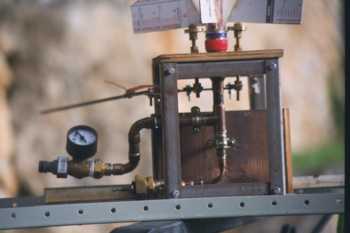 |
And this is the first practical realization |
 |
The rocket release system of this first launcher was nothing extraordinary, it consists of 2 pivoting pins. |
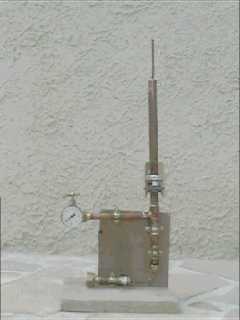 |
Here is a second realization, more stripped down, but with a more sophisticated release system. |
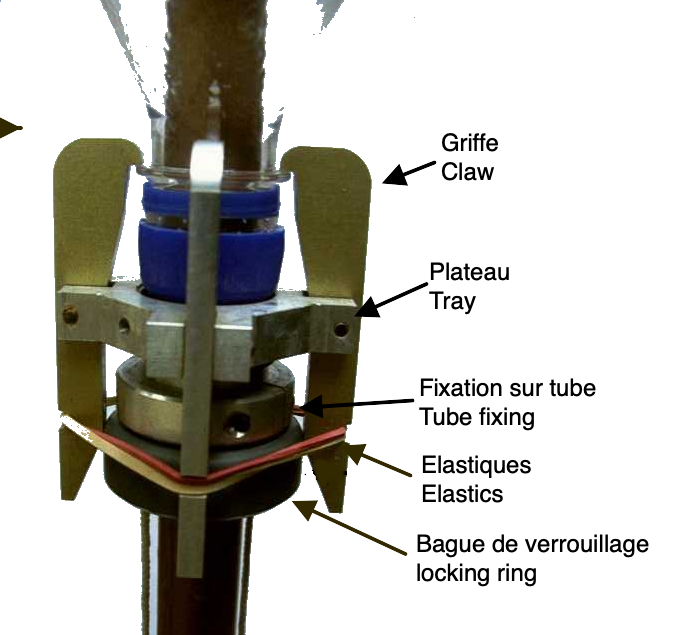 |
Close-up of the release system. It consists of a base which is a cross pierced and tapped in its center. A cam is articulated on each branch of the cross. The top of the cam will hook the flange of the bottle. At the bottom of the 4 cams, an elastic tries to put them in the open position, but a plastic sleeve (dark gray in the photo) sliding along the tube, forces them to remain closed. If we pull this sleeve down, the jaws open releasing the rocket. |
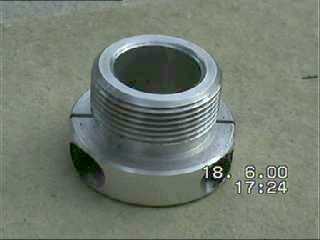 |
The cross is screwed on the "nut" opposite, which is itself tightened on the copper tube using two screws which tighten the split part below the screw thread. |
 |
Opposite a photo of the "jawbone" assembly. We can see the thread in the center and at the bottom right the sleeve. This whole set was machined by a friend. Thank you Pierre. |
 |
Another view of the system which allows a better view of the way in which the assembly is fixed on the tube. The split nut is tightened on the tube by means of the screw that can be seen in the center of the photo. We can also see the two holes in the sleeve through which a string passes which allows it to be pulled down for the release. |
 |
The system mounted on the tube, holding a bottle. |
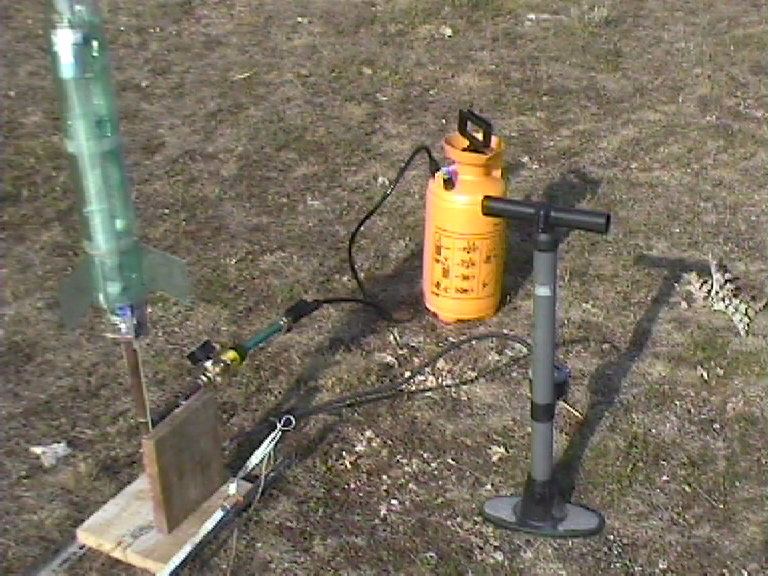 |
Here is a complete view of the launch installation. In addition to the rocket on a ramp (this is BiValse, twice 1.25 liters), we can distinguish the pump and the sprayer transformed into a water filler (an idea of ??Hervé Brégent). In fact, sprayers work like water rockets, the tank is filled with water and then pressurized by pumping (the black handle on top). The water being under pressure, we can therefore fill the rocket, as long as the pressure in the rocket is lower than that of the tank. As the pressure is filled, the pressure in the bottle increases, while it decreases in the sprayer. In practice I manage to put about 2 liters of water without pumping again, but I have not made a precise study on the subject. This system eliminates the need for the small internal pipe of my launcher whose objective was to release the pressure in the bottle to allow filling. Which means that a new, simpler launcher is planned. |


